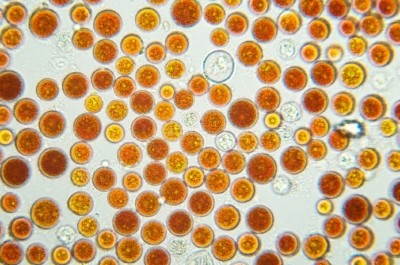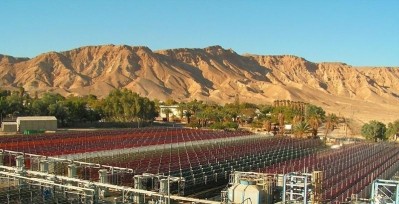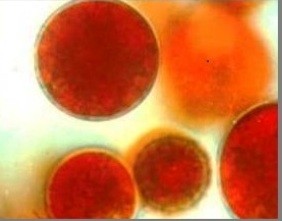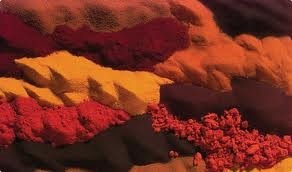Special edition: Antioxidants and carotenoids
Astaxanthin: Still red hot or cooling off? The Dr Oz effect… two years on
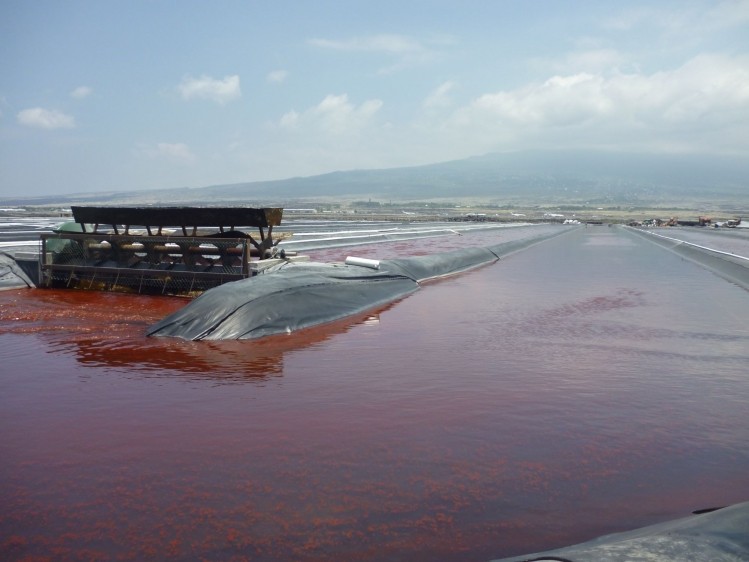
But has the novelty worn off, or is astaxanthin still red hot? And what’s driving sales of the ‘king of carotenoids’? Continued interest in its free-radical-busting credentials, or more condition-specific claims driven by the latest science?
Consumers in the US aren’t buying astaxanthin for its antioxidant power
Given how overcrowded the antioxidant market is, the trend is going in the condition-specific direction, agrees Bob Capelli, VP sales and marketing at Cyanotech, which grows astaxanthin from Haematococcus pluvialis microalgae in closed culture systems and then puts them through a 'reddening' cycle in large open culture ponds in Hawaii.
Indeed, while pure astaxanthin is still the biggest seller for Cyanotech’s Nutrex supplements arm, an increasing percentage of revenues now comes from condition-specific finished products under the MD Formulas brand, says the firm, which posted a 46% hike in revenues in fiscal year 2012 to $24.63m and a 110% surge in net income to $3.6m.
“Astaxanthin has so many other validated benefits that its antioxidant activity has become secondary”, adds Capelli, who says there is growing cynicism about marketing products on the basis of competing in-vitro ORAC scores instead of human clinical studies examining specific health benefits.
“The antioxidant marketing position for astaxanthin is validated, as natural astaxanthin is the strongest natural antioxidant found to date.
“But consumers in the US aren’t buying it for its antioxidant power; for the most part, they’re buying it for one of its other clinically validated benefits, such as eye and brain health, skin health, joint health or for the benefits it has for athletes and active people.
“There is a huge following for pure astaxanthin capsules in the long-distance runner and triathlete communities. They really value astaxanthin’s incredible antioxidant activity, its joint, tendon and heart benefits, as well its activity as an internal sunscreen, which is important for athletes or anyone spending a long time in the sun.”
There is a huge following for astaxanthin in the long-distance runner and triathlete communities
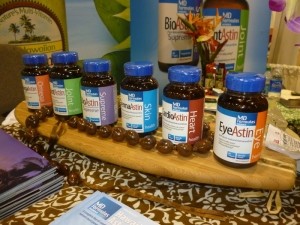
He adds: “It’s interesting that, while the science on astaxanthin for cardiovascular health is very strong with lots of new research, sales of CardioAstin are among the lowest of our condition-specific formulas.
“But we expect this to change as word gets out about all the new-found research on astaxanthin’s positive effect on the cardiovascular system. The best sellers in our MD Formula’s line are JointAstin and EyeAstin, with OmegaAstin coming in third.”
There is also potential to market products containing astaxanthin (which is shown to depress inflammatory markets such as C-Reactive Protein) in a new breed of products that tackle systemic or low-grade inflammation believed to be at the root of many chronic diseases, he says.
“While the FDA has an issue with mentioning ‘inflammation’ or ‘anti-inflammatory’ when marketing supplements, many people are finding out about astaxanthin’s activity in this area through research being publicized as compared to astaxanthin marketers talking about it.
“There is tremendous growth potential in this area in the future due to the severity of the diseases inflammation causes.”
Cardiovascular health and sports recovery
Israeli rival Algatech - which grows its Haematococcus pluvialis in a ‘closed’ network of glass tubes in the desert in southern Israel - is also looking at more condition-specific research into astaxanthin, and believes there is particular potential in sports nutrition/recovery and formulations for an aging population.

Says director of sales and marketing Efrat Kat: “Most of the clinical studies on astaxanthin were conducted on areas such as cardiovascular system, sports recovery and skin health. Consumers, doctors and opinion leaders are more and more interested in the detailed protocols and results of scientific trials, which is to our advantage.”
The Dr Oz effect has not worn off
But what do the formulation experts say?
One leading player is Florida-based Valensa International, which extracts astaxanthin from biomass it buys in from various producers to produces a branded astaxanthin product called Zanthin, plus several formulations combining this with other ingredients.
President Dr Rudi Moerck says: "The Dr Oz effect has not worn off. We’re still seeing strong sales and demand exceeds supply. We’re also seeing more condition-specific applications and products targeting cardiovascular health or joint health combining astaxanthin with other ingredients.
“We see joint health as a big winner as it’s a huge market that’s dominated by glucosamine and chondroitin which have questionable efficacy.”
While taking a standalone astaxanthin supplement will do you good, it makes more sense to combine ingredients, not least because consumers don’t want to pop 10 different pills a day, he points out.
“Our biggest success recently has been a formulation called FlexPro MD [combining astaxanthin, hyalauronic acid, and krill oil], which is marketed by Schiff Nutrition in its Move Free One product and the MegaRed joint care product.”
Tackling low-grade inflammation is a huge opportunity for astaxanthin
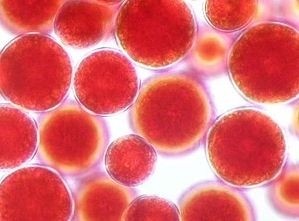
Dr Moerck also believes there is strong potential to market products containing astaxanthin on an anti-inflammatory platform.
“I think that low grade inflammation is now recognized as a huge long-term health issue in the US, and we think there is clear potential for products such as our Zanthin-XP-3 formulation [which combines astaxanthin and perilla seed oil] in this market.
“It’s a huge opportunity [for the nutraceuticals industry], but the average US consumer is totally uninformed about the long-term effects of chronic inflammation, so a massive amount of education is going to be needed from thought leaders to educate the public about it.”
Why hasn’t astaxanthin become a blockbuster in foods and beverages?
But what about astaxanthin in foods and beverages?
Both Cyanotech and Valensa don’t see a great deal of potential here in the short term, in part because of the technical difficulties in making a stable product since astaxanthin oxidizes so easily.
However, AlgaTech is much more optimistic, says Kat, who points out that it’s still only just over a couple of years since astaxanthin secured GRAS (Generally Recognized as Safe) status in the US.
“In Japan, a number of major food companies have successfully launched products containing AstaPure on beauty-from-within, sports activity, cardiovascular health, and other platforms, and while it hasn’t taken off in other regions yet, we have been contacted by some major food companies in the US.
“For them, concerns about supply being able to match demand are more of an issue than technical challenges, which can be overcome.”
Is there room for new entrants to the market?
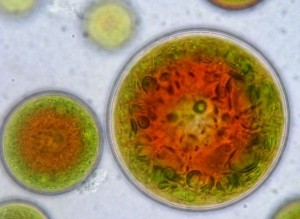
While the barriers to entry are high, new players will enter the natural astaxanthin production market, predicts Valensa’s Dr Moerck.
Indeed Valensa, which buys its astaxanthin biomass from several suppliers including parent company EID Parry in India (it used to buy a fair amount from Cyanotech until relations between the two soured over a legal dispute), has identified several new producers it thinks could succeed, and has struck deals with two new US-based suppliers (whose names Moerck will not disclose - yet).
Meanwhile, several companies investing in algae for biofuel production have come to realize that they can’t make money this way and now see astaxanthin as a more lucrative opportunity, given that it can fetch up to $12,000/kg, he says.
However, Algatech's Kat notes that “many companies have tried and failed [to produce astaxanthin on a commercial scale]”.
She adds: “The current shortage in supply attracts other companies but the fact is that there are a very few companies in the world who actually succeeded in commercial cultivation of microalgae.”
Meanwhile, Algatech is able to increase capacity to meet growing demand more rapidly than rivals, claims Kat.
"We have a lot of land we can build on here in the desert. We’re expanding astaxanthin production capacity significantly this year."
Algatech’s new owner British private equity firm Grovepoint Capital is also investing “substantial” sums to explore the potential of producing other nutraceutical ingredients from microalgae, with several projects now in the pilot phase, she adds.
Gerry is considered by most in the field to be the father of microalgae production
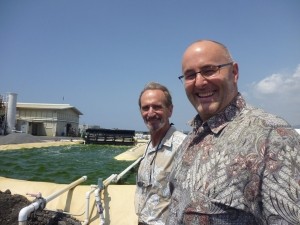
Cyanotech, which claims its open ponds are easier to clean than Algatech's glass tubes and don’t have nooks and crannies where unwanted organisms can lurk and proliferate, says it has seen “many companies come into the category and try to produce it, only to go bankrupt and close their facilities”.
And if others try, says Capelli, Cyanotech is confident it will retain its market-leading position: “Cyanotech still has our founder, Dr. Gerry Cysewski, at the helm as chief scientific officer. Gerry is considered by most in the field to be the father of microalgae production after more than 35 years growing Spirulina and Haematococcus among several other species.
"We not only produce a stable product that always contains the full content of astaxanthin on its label, which is a very serious problem in the industry, but we also produce much higher volume than all our competitors.”
Cyanotech has also invested in supercritical carbon dioxide extraction equipment that will enable it to bring the astaxanthin extraction process in-house by April 2014, reducing costs and lead times, says Dr Cysewski.
Meanwhile, Cyanotech continues to explore the commercial potential of producing “new high value products from microalgae”, he says... but won’t reveal what they are (yet).
So watch this space...
